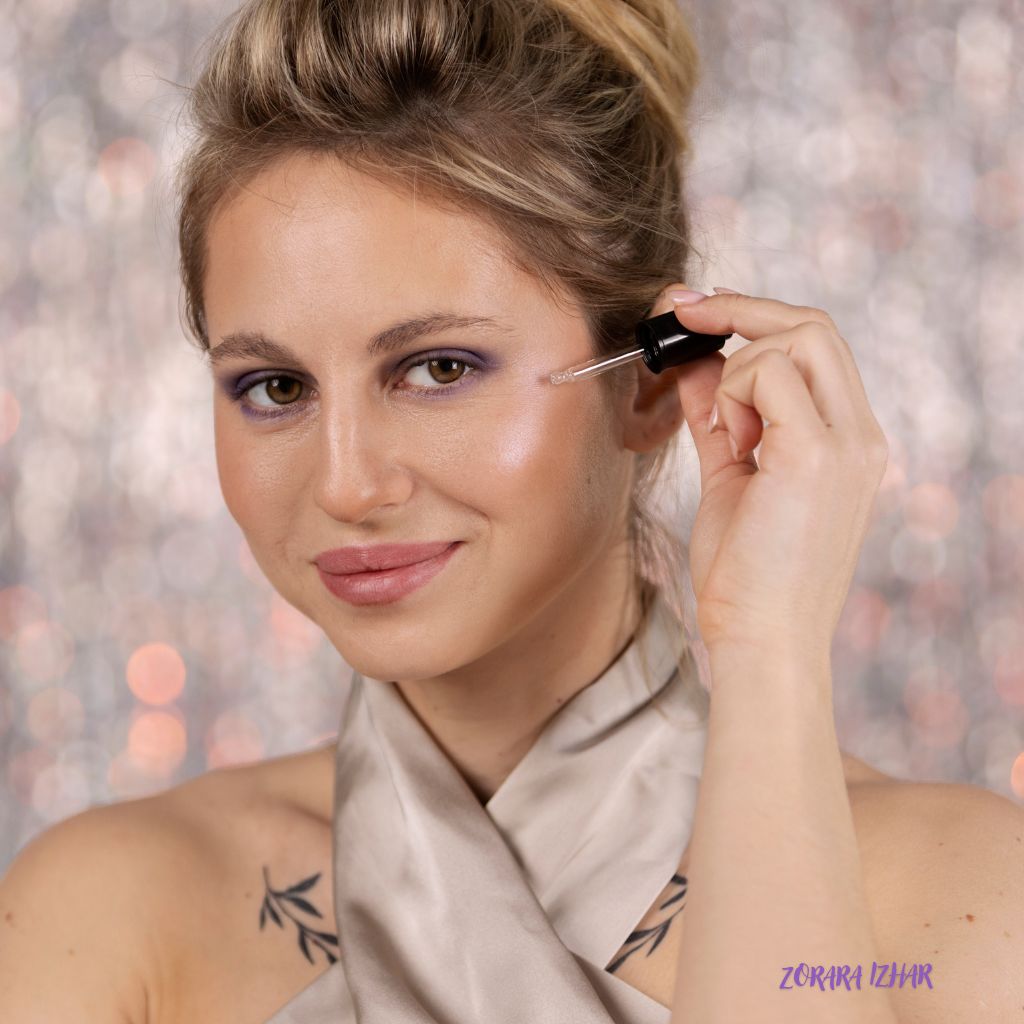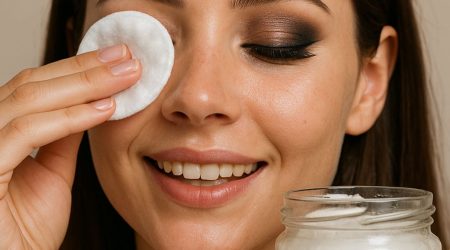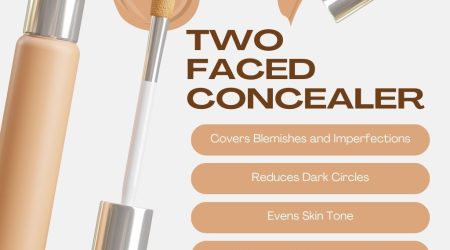9
May
How do I make my makeup last all day?
Introduction: The Struggle of Makeup Fading
Want your makeup to stay flawless from morning to night? Achieving long-lasting makeup requires more than just a quick application; it’s about creating a solid base and using the right products and techniques to ensure everything stays put. Whether you're heading to work, a special event, or just want to look fresh all day, these tips will help your makeup last longer and keep you looking your best. Every woman wants her makeup to look fresh, beautiful, and flawless all day long. But heat, humidity, or being outside for long periods of time can quickly ruin makeup. In such a situation, it is important to know what to keep in mind to keep your makeup long-lasting and fresh. In this article, we will tell you the easy and effective ways to keep your makeup looking fresh all day long, whether you are at an event or in the office.Understanding Your Skin Type
The first condition for successful and long-lasting makeup is that you know your skin type well. Everyone has different skin types, such as dry, oily, normal or combination skin. If you apply makeup without understanding your skin type, either the makeup will quickly deteriorate or it will feel unbalanced on your skin. Therefore, it is important that you first correctly identify your skin so that you can use the right products and the makeup will stay fresh for a long time.Why Skin Type Matters
Your skin type is the foundation of your makeup routine. Using the wrong products can shorten wear time or cause makeup to slide off entirely.
Oily skin
Oily skin is skin that naturally has a high oil content, especially in the T-zone (forehead, nose, and chin). This type of skin tends to have a tendency to make makeup run quickly or form a greasy film on the face, making it look patchy. The most important thing for oily skin is to use oil-controlling products, such as oil-free moisturizers, matte finish primers, and long-lasting or matte foundations. In addition, setting powders and blotting papers also help control oil throughout the day. Proper care for oily skin will help your makeup look fresh and radiant throughout the day.Dry skin
Dry skin is one that lacks moisture, causing the skin to feel tight, lifeless or rough, and sometimes even flaky. If makeup is applied to such skin without proper preparation, foundation can create lines, look patchy, and make the skin look even drier. For dry skin, it is important to moisturize the skin well before applying makeup, preferably with a hydrating and nourishing cream or serum. Hydrating primers, dewy foundations, and creamy products like blushes and highlighters work best on dry skin and give the face a natural glow. Finally, using a light hydrating setting spray helps keep makeup fresh for longer.
Combination skin
Combination skin is one in which some areas of the face are oily and others are dry or normal. Typically, the forehead, nose, and chin (the T-zone) are oily, while the cheeks and area around the eyes are dry or normal. Applying makeup for this skin type can be a bit tricky because you have to take into account the different needs of different areas. For best results, use a lightweight, oil-free moisturizer only on oily areas and apply a more hydrating cream to the cheeks. Use the same primer: a matte primer on the T-zone and a hydrating primer on the rest of the face. Choose a foundation that is balanced and suitable for both skin types. Apply setting powder only on areas where the skin is most oily to keep shine under control.
Identifying Oily, Dry, or Combination Skin
To identify your type:
Oily:
The most obvious sign of oily skin is that the face is shiny throughout the day, especially in the T-zone (forehead, nose, and chin). This skin produces more oil, which makes the pores look open and prominent. On oily skin, makeup often melts quickly and the face starts to feel greasy within one to two hours. This type of skin is also more likely to develop acne and blackheads. If you put a blotting paper or tissue on your face and it leaves clear oily marks, especially all over your face, then this is a sign that you have oily skin.
Dry:
Dry skin is one that lacks natural moisture, making the face feel tight, lifeless, and sometimes rough. This skin often shows wrinkles or fine lines, and after applying makeup, it tends to sit in places or peel off. People with dry skin usually experience dryness or a shiny white layer around the cheeks, forehead, and eyes. If you still feel tight an hour after washing your face and no oil comes off when you use a tissue, it is a clear sign that you have dry skin.
Combination:
Combination skin has some areas of the face that are oily while others are dry or normal. Usually, the T-zone (forehead, nose, and chin) feels oily, while the cheeks and area around the eyes are dry or normal. This skin type is a bit tricky because different areas require different care. If you wipe your face with a tissue and only the T-zone feels oily while the rest of your face is dry or normal, it is a clear sign that you have combination skin. Choosing a balanced skincare and makeup product is important for this type of skin.
Step 1: Start With Skincare
Makeup should always be based on good skincare. If your skin is in good condition, your makeup will look better and last longer. First, cleanse and hydrate your skin so your makeup looks smooth and even. If you have dry skin, use a moisturizing face wash and serum to lock in moisture. Oil-free and controlling products are best for oily skin, while for combination skin, use balanced products that can address the needs of different areas. Next, apply a primer that suits your skin type—for example, a matte primer for oily skin, a hydrating primer for dry skin.
Clean, exfoliated skin helps makeup adhere better and stay longer. Use a gentle exfoliator 2–3 times a week and a daily cleanser suited to your skin type.
Hydrate and Moisturize for a Smooth Base
A successful makeup application always starts with a smooth and radiant base. That’s why it’s important to hydrate and moisturize your skin properly. If your skin lacks moisture, your makeup can sit on your skin and look dry or patchy. For dry skin, use a good hydrating serum or cream that deeply moisturizes your skin. Those with oily skin should use an oil-free moisturizer to prevent excess oil from building up on your face. This will not only make your skin soft and smooth, but your makeup will also last longer and look better.
 Step 2: Use a Primer That Works
Step 2: Use a Primer That Works
The Role of Primers in Longevity
Primers act like double-sided tape for your makeup. They create a grip between your skin and the products, minimizing oil, smoothing texture, and increasing wear time.
Choosing the Right Primer for Your Skin
-
Oily skin: Mattifying primers with silicone.
-
Dry skin: Hydrating primers with hyaluronic acid or glycerin.
-
Large pores: Blurring primers for a smooth finish.
Step 3: Apply Foundation the Right Way
Foundation Formulas That Last
Choose long-wear or transfer-resistant formulas labeled “24-hour wear,” “matte,” or “sweatproof.” Avoid overly dewy products if you struggle with oiliness.
Application Tools and Techniques
-
Use a damp beauty sponge or dense brush for even coverage.
-
Apply thin layers and build coverage gradually to avoid cakiness.
-
Always press, don’t drag, to help makeup bind with skin.
Step 4: Layer With Cream and Powder Products
Why Layering Matters
Layering cream blush or contour under powder helps lock color in place. This technique is used by makeup artists to create long-lasting dimension.
Locking Products in Place
-
Apply cream blush, then set lightly with powder blush.
-
Do the same with bronzer and highlighter.
-
Use translucent powder to avoid altering color.
Step 5: Set With Powder Strategically
Types of Setting Powders
-
Translucent powder: Best for setting the whole face.
-
Tinted powders: Great for extra coverage.
-
Loose powder: Best for oily skin and under-eye baking.
Focus on Key Areas
Set the T-zone, under eyes, and anywhere prone to creasing. Use a puff or brush to press powder in—don’t sweep, which can move product.
Step 6: Seal It With Setting Spray
Benefits of Setting Sprays
Setting sprays create a film that locks everything in place. They also blend powder into the skin, reducing a cakey appearance.
Application Techniques for Best Results
-
Spray in an “X” and “T” formation.
-
Let it dry naturally—no fanning!
-
Use a sponge to press in product after misting for maximum hold.
Bonus Tips for All-Day Makeup
Avoid Touching Your Face
Your hands carry oils and bacteria that can smudge or break down makeup.
Blotting Instead of Reapplying
Use blotting papers or a blotting sponge to remove excess oil without disturbing your base.
Reset your makeup: If your makeup is fading over time, use blotting papers to absorb excess oil from your face. Then apply a setting spray to reset your makeup and look fresh. Wash your face with cold water: If your makeup is a little dull in the middle of the day, wash your face with cold water to bring back the shine and look fresh. Then apply a light setting spray to help your makeup stay put. Choose the right makeup: Choose makeup products that are long-lasting or waterproof to last longer, especially against weather influences like sweat or humidity. Use powder to keep your makeup fresh: Use powder blush and powder highlighter during the day to help your makeup last longer and prevent your skin from losing its glow. Choosing the right foundation: When choosing a foundation, use products that suit your skin type and last longer, such as matte foundations for oily skin and hydrating foundations for dry skin. Apply light makeup: Avoid wearing too heavy makeup as it may not last all day. Instead, apply light and natural makeup, which will stay fresh for a long time. Retouch and refresh: Check your makeup throughout the day and if necessary, refresh it with blotting papers or setting spray to make it look fresh and radiant again.Product Recommendations
Long-Lasting Foundations
| Brand & Product | Key Features | Best For | Duration |
|---|---|---|---|
| Maybelline Superstay Full Coverage | Full coverage, matte finish, oil control | Oily & Combination skin | 24 hours |
| Estée Lauder Double Wear | Long-lasting, full coverage, lightweight | Oily skin | 15 hours |
| Fenty Beauty Pro Filt'r Soft Matte | Matte finish, natural look, oil control | Oily & Combination skin | Long-lasting (up to 12 hours) |
| Lancôme Teint Idole Ultra Wear | Natural finish, long-lasting, lightweight | All skin types | 24 hours |
| NARS Radiant Longwear Foundation | Radiant finish, light feel, long-wear | Dry & Combination skin | 16 hours |
| MAC Studio Fix Fluid SPF 15 | Matte finish, SPF protection, oil control | Oily skin | 24 hours |
| Urban Decay All Nighter Liquid | Full coverage, long-lasting, full coverage | Oily skin | 16 hours |
 Top Setting Sprays
Top Setting Sprays
| Brand & Product | Key Features | Best For | Duration |
|---|---|---|---|
| Urban Decay All Nighter Setting Spray | Long-lasting, oil control, matte finish | Oily & Combination skin | 16 hours |
| MAC Prep + Prime Fix+ | Hydrating, refreshing, helps with setting makeup | All skin types | Up to 12 hours |
| Charlotte Tilbury Airbrush Flawless Setting Spray | Long-lasting, blurs imperfections, oil-free | Oily & Combination skin | Up to 16 hours |
| NYX Professional Makeup Setting Spray | Affordable, lightweight, mattifying or dewy finishes | Oily skin (matte), Dry skin (dewy) | Up to 8 hours |
| All Nighter Pollution Protection | Protects from pollution, oil control, setting makeup | All skin types | 16 hours |
| Make Up For Ever Mist & Fix Setting Spray | Lightweight, hydrating, sets makeup in place | Dry & Combination skin | 12 hours |
| Tatcha Luminous Dewy Skin Mist | Hydrating, dewy finish, brightens the complexion | Dry & Normal skin | Up to 8 hours |
Common Mistakes That Shorten Makeup Wear
Not following a skincare routine Neglecting skincare can cause makeup to not adhere properly to the skin and cause it to peel off. Not using a primer Without a primer, makeup starts to melt quickly and does not last long. Choosing the wrong foundation Choosing the wrong foundation according to your skin type makes makeup last less. Using too many products Applying too many products makes makeup heavier and causes it to peel off quickly. Not setting makeup Not using a setting powder or spray can cause makeup to peel off quickly and create a shiny finish. Touching your face frequently Touching your face frequently causes makeup to fade and increases the shine of your skin, which shortens the duration of your makeup. Using the wrong tools Improper use of brushes or sponges hinders the proper setting of makeup and causes makeup to fade quickly. Not blending Not blending foundation or concealer properly creates lines and spots, which can cause makeup to fall out. Not using a setting spray Not using a setting spray prevents makeup from setting and causes makeup to fade quickly.Overloading on Product
Too much makeup can crack or slide off. Less is more—build in thin layers.
Skipping Skincare Steps
Neglecting skincare results in dry patches or excess oil that ruins your look faster than you think.
FAQs
1. Does primer really make a difference?
Yes! A good primer fills in pores, controls oil, and helps makeup adhere better.
2. Can I make makeup last without setting spray?
Yes, but setting spray enhances longevity. You can still use powder and layering techniques.
3. Why does my foundation separate after a few hours?
It’s likely due to improper skin prep or using mismatched products for your skin type.
4. What’s the best foundation for all-day wear?
Estée Lauder Double Wear is highly rated for its staying power and finish.
5. How often should I blot my face?
Only when needed—usually once or twice a day, depending on oil production.
6. Is it okay to touch up makeup during the day?
Yes, but use minimal product and blot beforehand to avoid build-up or caking.




